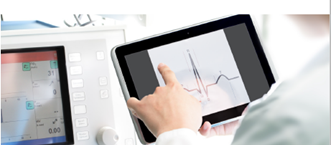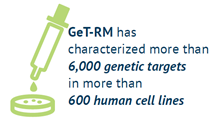Informatics and Data Science
DLS develops, implements, and evaluates informatics and data science approaches to strengthening laboratory information systems for improved clinical and public health outcomes. This collaborative work includes coordination of regional and national systems, reporting of laboratory diagnostic information to electronic health records (EHR), decision-making tools for health care providers, research and application of laboratory-related data, and informatics solutions for improved laboratory management, practice, and emergency preparedness.

Our Services
- Improve the collection, maintenance, research, and application of data from national laboratory systems and other large health databases, such as medical data warehouses.
- Provide leadership and coordination for improving the management of laboratory information systems.
- Advance laboratory health information technology (LabHIT) by engaging with laboratory and health informatics professionals and other stakeholders in developing national standards, policies, and certification requirements for EHRs and the evolving health IT structure.
- Support interoperable health IT standards, such as harmonization of laboratory testing codes (e.g., LOINC, SNOMED CT) to enable meaningful comparison of results worldwide.
- Operate the CDC and ATSDR Specimen Packaging, Inventory and Repository (CASPIR) – CASPIR preserves CDC’s valuable specimen collections, including those from historical studies, outbreak investigations, and emergency responses.

- Provide tools to assess the quality of human genome sequencing. DLS collaborates with the National Institutes of Health’s National Center for Biotechnology Information and other partners in the genetic testing community to create the GeT-RM Browser. This web portal allows laboratories to compare their genome sequencing test results with highly characterized reference materials to determine whether they have accurately generated a DNA sequence.
- Collaborate with partners such as the Association of Public Health Laboratories (APHL), to enhance access, analysis, and sharing of information about laboratory services and capacity nationwide through the Public Health Laboratory System Database (PHLSD) and the Informatics Self-Assessment Tool.
Our Impact
- DLS’ laboratory services are a critical component of health IT. Accurate, expedient, and user-friendly integration of laboratory diagnostic results into EHRs helps ensure quality patient care and treatment.
- DLS collaborates wtih many partners to provide subject matter expertise and build consensus on topics, such as the development of standardized vocabulary, semantic operability of laboratory test coding, certification of EHR modules, inclusion of Clinical Laboratory Improvement Amendments requirements, and laboratory accreditation standards.

- DLS communicates the value of laboratory health IT through LabHIT which provides information and professional guidance on the exchange of test results between the EHRs and laboratory information systems to support patient safety. Through research and case studies, DLS shows the significance of laboratory data-related interoperability.
- CASPIR specimens play crucial and historical roles in public health research and population health. DLS provides a controlled, uniform environment to preserve CDC’s unique specimens. CASPIR supports national studies, such as the National Health and Nutrition Examination Survey, the Active Bacterial Core Surveillance Program, and the Child Health and Mortality Prevention Surveillance Network.
- DLS has amassed a large inventory of samples to support genetic testing. These reference materials, available through Coriell Institute for Medical Resarch, are used by clinical laboratories, research laboratories, and test developers nationwide to improve the quality and availability of genetic testing and to develop new tests.

- When fully implemented, the PHLSD will form the basis of a first-ever, online national directory of public health laboratory services. Health departments will be able to immediately direct samples to laboratories that can run the tests needed. The web-based Informatics Self-Assessment Tool provides for the first time, data available on the informatics capacity of public health laboratories nationwide, and a suite of tools for comparison and analysis from the national to organizational level.
- DLS’ products provide real solutions using current technologies. DLS designed the partial thromboplastin time (PTT) Advisor app, an innovative mobile application that helps clinicians select the right follow-up tests for patients with blood clotting disorders.
|
Ensuring safety and effectiveness of laboratory data in EHR systems As reported in the news, “A young woman’s abnormal Pap smear results went undetected for four years because of a usability issue with her physician’s EHR system. Because of a default setting, the system showed the physician the patient’s previously normal laboratory result, and the more recent abnormal result went unnoticed.1 The young woman’s advanced cervical cancer was only detected when she sought treatment for other symptoms that had developed. As a result of the delay in diagnosis and treatment, the young woman had a hysterectomy. The LabHIT team is working with other federal agencies and its partners in the laboratory and health IT communities to ensure preventable errors like this do not occur.2 Sources: 1. Singer, S. Electronic medical records may cause patient care errors, Florida medical board says, Ft. Lauderdale, FL: Palm Beach Post; 2010. 2. Sawchuk M, Linville M, Cornish N, Pollock A, Lubin I, Gagnon M, et al. The essential role of laboratory professionals: ensuring the safety and effectiveness of laboratory data in electronic health record systems. Atlanta, GA: Center for Surveillance, Epidemiology, and Laboratory Services, Centers for Disease Control and Prevention; 2014. |
- Page last reviewed: February 9, 2017
- Page last updated: February 9, 2017
- Content source:


 ShareCompartir
ShareCompartir